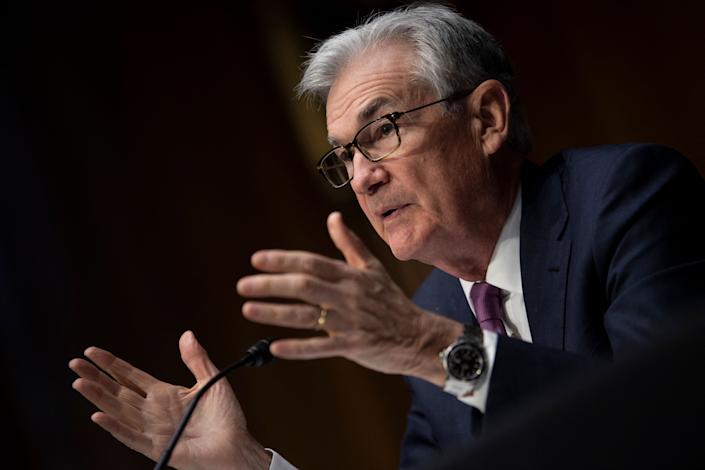Business & Economy
Fed holds rates at near zero, tees up interest rate increase to quell inflation

The Federal Reserve on Wednesday held interest rates at near zero, but reiterated its commitment to withdrawing its pandemic-era easy money policies in the face of rapid price increases.
“With inflation well above 2% and a strong labor market, the Committee expects it will soon be appropriate to raise the target range for the federal funds rate,” the policy-setting Federal Open Market Committee said in its updated statement.
In its first policy-setting meeting of 2022, the Fed reiterated that U.S. economic activity continues to strengthen despite the emergence of the Omicron variant of COVID-19.
But a surge in prices since last year is weighing on the FOMC, where policymakers are coming around to the view that higher interest rates will be needed to prevent runaway inflation.
Higher rates could address inflation by raising borrowing costs and dampening demand — particularly for goods.
The Fed did not opt to raise interest rates Wednesday because policymakers have messaged that they want to end the central bank’s pandemic-era policy of asset purchases first. The FOMC reaffirmed Wednesday that it will wrap up that process in early March, meaning the first pandemic-era rate hike could be coming in six weeks.
Looking ahead, the FOMC released a document detailing “principles” for how it may — down the line — actively shrink its asset holdings, noting that such a process would “commence after the process of increasing the target range for the federal funds rate has begun.”
The statement suggests the Fed would allow maturing assets to roll off of its balance sheet, with a bias toward holding “primarily Treasury securities” (as opposed to the agency mortgage-backed securities it has also accumulated since the pandemic began).
“The Committee is prepared to adjust any of the details of its approach to reducing the size of the balance sheet in light of economic and financial developments,” the Fed statement reads.
The decision to hold rates at near zero in Wednesday’s meeting was unanimously agreed upon by the FOMC’s voting members.
Dual mandate
The Fed has a dual mandate of stable prices and maximum employment. On stable prices, the FOMC acknowledged that inflation remains elevated.
The Consumer Price Index showed prices in the United States growing by 7.0% between December 2020 and December 2021, the fastest year-over-year pace of inflation seen since June 1982.
Fed officials have been warning that elevated inflation readings could persist through the beginning of this year, increasing the pressure to tighten policy.
In the last meeting in December, all 18 of the FOMC’s members saw the case for at least one rate increase (of 25 basis points) this year.
Supporting the case for withdrawing its pandemic-era easy money policies: a labor market recovery that appears to be chugging along. In December, the unemployment rate tilted down to 3.9% — inching closer to the pre-pandemic rate of 3.5%. None of the FOMC members had expected the headline figure to be so low.
“Job gains have been solid in recent months, and the unemployment rate has declined substantially,” the FOMC statement reads.
The Fed’s next policy-setting meeting is scheduled for March 15 and 16.


